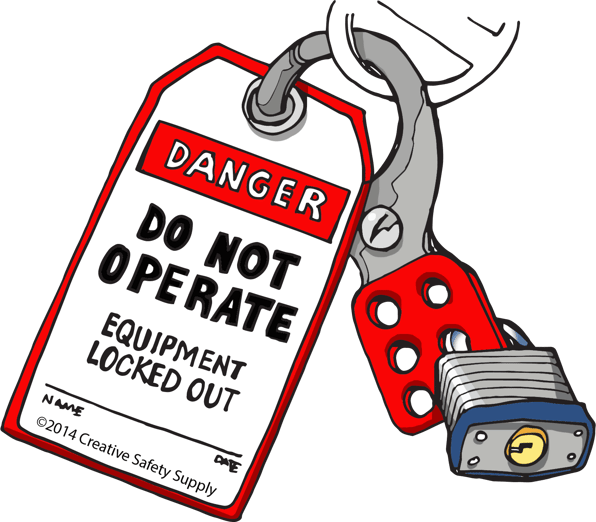Fire safety is one of the most basic types of safety training, and yet it is often overlooked. This is serious because fires can be a common occurrence at construction sites. The combination of combustible substances, open flame (from torches, for example), and poor ventilation in some construction areas create extremely hazardous conditions with a high risk of fire.
✔ Familiarize yourself with the location of all fire exits, alarms and fire extinguishers.
✔ Keep fire exits clear at all times.
✔ Make sure enough fire extinguishers are in the area. Replace empty fire extinguishers immediately.
✔ A fire extinguisher inspection must be carried out at least once per month and date tags must be visible on the extinguisher.
✔ Know how to use the fire extinguisher properly and know which type of extinguisher to use on which class of fire. Using the wrong type of extinguisher can cause the fire to spread.
✔ Always store flammable materials in proper containers, away from buildings and ignition sources.
✔ Post warning signs identifying the areas where flammable liquids are being used.
✔ Wear clothing that is flame-resistant. If the job allows you to wear personal clothing, make sure it is made from organic material. Synthetic materials will catch fire easily and cause burns.
✔ Beware of sparks from tools and other sources.
✔ Know the classes of fire. A Class A fire involves natural combustibles such as wood; Class B fires involve flammable liquids such as bitumen or gasoline, and Class C fires involve electrical fires and combustible metals such as magnesium.
Final Thoughts
These minimum training and equipment requirements, if followed correctly, will greatly reduce the risk of serious injury on the job site. For more information regarding this subject, please reference the applicable sections of the Occupational Health & Safety Regulation.
SiteDocs Safety Corp. exists to provide resources to the construction industry, and as such, can not be held responsible in any way for the hazardous attitudes, actions or behaviors of any worker, or for unsafe working conditions. Furthermore, SiteDocs Safety Corp. assumes no responsibility for any misinformation contained in these resources as they do not supersede provincial or Federal Regulations. Therefore, it is the user's sole responsibility to become acquainted with the requirements as set forth in the Worker's Compensation Act and the Occupational Health & Safety Regulation as it relates to their respective industry.
Tags
- 175|AT
- Aftermarket
- all-terrain
- autograde
- avetta
- Berco
- Best Managed Companies
- bushings
- Canada's Best Managed Companies
- Case Studies
- Caterpillar
- construction
- continuous improvement
- crane
- cranes
- crusherwearparts
- customer focused
- Deere
- dozer
- dozerblades
- efficient
- environment
- EQUIPMENTWATCH
- Esco
- ESS
- excavator
- Excavator Crawler Medium
- excavator telematics
- face sheild
- FINAL TIER 4 ENGINES
- fire
- fire safety
- FUEL CONSUMPTION
- fuel efficiency
- fuelconsumption
- fuelefficiency
- gnss
- gps
- grade
- grade control
- headandcoldstress
- healthandsafety
- healthandsafetyexcellence
- Heavy Equipment
- heavy lifting
- heavyequipment parts
- heavymachinery
- HEAVYMACHINERY TOOLS
- hybrid
- iCraneTrax
- idler
- imc2.0
- Intelligent Machines
- isn
- ITM
- jobsite
- jobsites
- johndeere
- Komatsu
- Komatsu Dozer
- Komatsu Excavator
- Lattice
- LBX
- lifting
- link belt excavator
- Link-Belt 245 X4 Spin Ace
- Link-Belt Cranes is Pulse 2.0
- linkbelt
- LINKBELTCRANES
- links
- loader
- loaderlips
- lockout and tagout
- loto
- machine
- machinecontrol
- maintenance
- my komatsu
- new excavator
- OEM
- pipe
- predictive maintenance
- preventionofslipsandfalls
- remote care
- rigging
- safestemployers
- safety
- safety glasses
- safety talk
- safetyandeyecontact
- safetyandharness
- safetyatheights
- safetycompliance
- safetyfirst
- safetyhandsignals
- safetyspotting
- safetytalks
- sitech
- slipsandfalls
- smart construction
- SMART QUARRY
- smartconstruction
- telematics
- tier4
- TOOLSAFETY
- topcon
- trackshoes
- trimble
- undercarraige
- undercarriage
- vises
- Volvo
- weir
- wheel loader
- WRENCH
- wsib
SIMILAR BLOGS

Spotter Safety Talk

Why are Safety Harnesses Important?

POST YOUR COMMENT